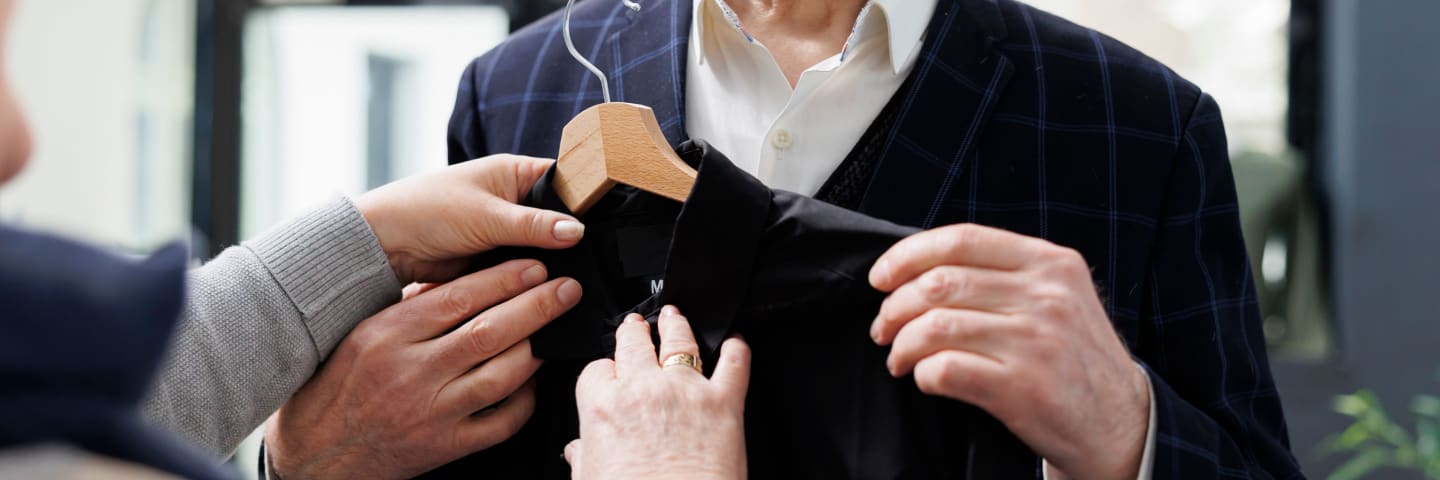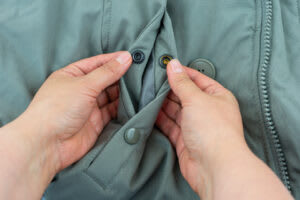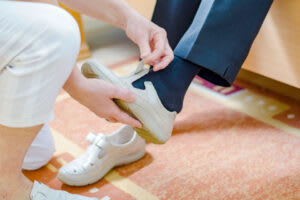
The Best Adaptive Clothing for Seniors

If an aging parent is struggling with buttoning their shirt or putting on their shoes, getting dressed can become challenging for them and their caregivers. Fortunately, adaptive clothing for seniors — which can lessen frustration and improve comfortability — is more accessible than ever before. You can find stylish, easy-to-put-on clothes for elderly loved ones and apparel designed for specific conditions like Alzheimer’s or Parkinson’s disease at popular stores or online. This article outlines types of adaptive clothes for seniors and where to find options in order to reduce the daily hassles of getting dressed.
Let our care assessment guide you
Our free tool provides options, advice, and next steps based on your unique situation.
Key Takeaways
- Getting dressed can become difficult for seniors. Aging often comes with less dexterity and mobility, making it difficult to button shirts or put on shoes.
- More companies are starting to accommodate individuals with mobility issues. Families can now find adaptive clothing at JCPenney, Target, Walmart, and more.
- Adaptive clothing features make getting dressed easier. Velcro, snap-on, and magnetic closures make mornings easier for seniors and their caregivers.
- Look into care options when dressing becomes difficult. If helping your senior loved one get dressed is no longer feasible, it may be time to consider senior care options.
What is senior adaptive clothing?
Adaptive clothing is specifically designed for people living with physical disabilities, mobility issues, cognitive challenges, and sensory sensitivities. For seniors, it’s sometimes called geriatric adaptive clothing or just geriatric clothing.
Think simple and easy: Velcro pants for seniors that eliminate tricky buttons, shoes that slip on without sacrificing support, dress shirts with magnetic buttons, pants specifically designed for people who use wheelchairs or remain in bed for long parts of the day. Easy-access clothing for elderly loved ones and clothing for seniors with limited mobility can be especially helpful for family caregivers.
Retailers will often separate adaptable clothing for seniors into two categories:
- Assisted dressing, which is apparel that a caregiver helps the wearer put on
- Self-dressing, which is apparel that a more independent wearer can put on themselves

Let our care assessment guide you
Our free tool provides options, advice, and next steps based on your unique situation.
Where to find clothing for seniors who are elderly or disabled
In recent years, popular companies like JCPenney, Kohl’s, Target, Walmart, Tommy Hilfiger, and Zappos have all started selling adaptive clothing lines, meaning you can shop for your loved one at familiar stores.
Magnetic, snap-on, and Velcro clothing for seniors

Adaptive clothing for seniors with dementia

Adaptive bras, underwear, and shoes

In addition, there are other innovative products for seniors that may make your loved one’s life easier beyond adaptative clothing.

Talk with a Senior Living Advisor
Our advisors help 300,000 families each year find the right senior care for their loved ones.
When dressing seniors becomes difficult
While adaptive senior clothing can help your loved one remain independent, it may indicate that their care needs are rising. If your loved one is having trouble with activities of daily living (ADLs) such as dressing, toileting, or maintaining hygiene like they used to, it could be time to consider whether they need extra assistance.
Assisted living, memory care, and residential care homes offer help with activities of daily living, including bathing, dressing, grooming, and toileting. Additionally, these communities often have access to physical therapists and occupational therapists, who can help improve a resident’s mobility and independence.
For seniors who want to continue living in their home, home care services can help them stay safe, and the extra assistance can reduce the chances of caregiver burnout. To help you find the most suitable option for your loved one, you can reach out to a Senior Living Advisor at A Place for Mom. They can answer your questions about senior care and help you find options nearby — all at no cost to you.
Disclaimer: A Place for Mom received no compensation from the makers of these products and makes no formal endorsement as to their quality. Readers are urged to conduct their own research.
Senior living options in all states
The information contained on this page is for informational purposes only and is not intended to constitute medical, legal or financial advice or create a professional relationship between A Place for Mom and the reader. Always seek the advice of your health care provider, attorney or financial advisor with respect to any particular matter, and do not act or refrain from acting on the basis of anything you have read on this site. Links to third-party websites are only for the convenience of the reader; A Place for Mom does not endorse the contents of the third-party sites.
Make the best senior care decision
Make the best senior care decision